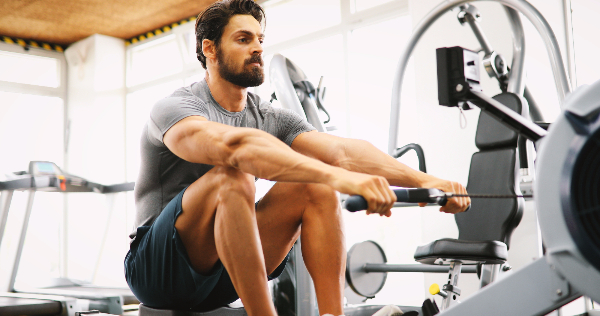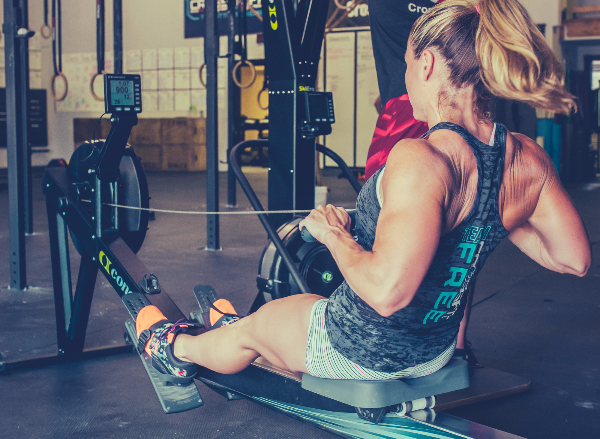- Track your orders
- Save your details for express checkout
Rowing Technique
Understanding Rowing Technique: Catch, Drive and Finish
One of the best things about rowing is that it involves teaching your body a new movement. In utilizing multiple muscle groups in a single stroke, rowing is a diverse form of exercise, making it the ultimate all - in -one workout. To help you make sense of the technical aspects and get the most out of your rowing workout, we have broken down the active phase of the stroke- the catch, drive, and finish; so you can focus in on good technique and achieve maximum efficiency and speed!
The Catch
Rowers on the water refer to the process of the oar entering the water, and the initial pressure taken on the established blade as ‘the catch’. The catch of the stroke on the water is crucially important, it must occur with the least disruption to the boats established running speed, so that the exertion on the blade can increase the overall boat speed in the most efficient way possible. While we do not have quite the same factors at play on the indoor rower, it can be helpful to imagine the spinning flywheel is like the boat, and that in taking a stroke we want to add to its speed, and not disrupt it. In order to achieve this efficiency on the indoor rower, it is important to keep the hands moving at the catch, so that the end of the recovery, the catch, and the first stage of the drive are one connected movement. If done correctly, the initial pressure on the catch should feel light and quick- not heavy. When the catch feels heavy, this can be a sign that the flywheel has been allowed to slow too much, or the catch has been taken too slowly. A good catch is also important on the indoor rower as it helps to set up the stroke patterning for the rest of the drive. At the catch the arms should stay loose and relaxed, with the pressure of the initial drive connected from the handle to the feet through the lats, lower back, glutes and quads.
Tip: At the catch, think about keeping your neck tall and your shoulders down, ensuring the resistance is met through your legs and core, and not taken up into the shoulders.
The Drive
You may have heard the rowing stroke described as a sequence in the order of ‘legs, body, arms’. In these terms, the drive would involve the entire leg portion of the sequence as well as the transfer of resistance from the legs to the body. The drive is the most dynamic portion of the stroke, with the legs accelerating through to the finish, as the moving flywheel increases in speed. It is important during the drive that the legs are applied against the resistance of the flywheel, and that the back, arms and shoulders only work to ensure the pressure remains on the legs. Using the back and arms too early can interrupt the leg drive and minimise the benefits of recruiting the glutes and quads, as well as ending the stroke prematurely. When achieved correctly, the body should only take over on the drive once the legs have reached approximately 80% of extension, completing the highest resistance portion of the drive. The transfer of resistance from the legs to the body happens seamlessly, with the body simply continuing the momentum created by the legs.Did you know: By allowing the legs to work the highest resistance portion of the drive, less pressure is placed on the smaller back muscles, reducing the chance of stiffness or injury in the lower back.
The Finish
Now that the legs have taken care of the first 80% of the drive, all that is left is to finish off with the body and arms. This phase of the stroke is aptly referred too as the ‘finish’ and it represents the culmination of the resistance phase of the stroke, before rolling into the recovery. The aim of transferring the resistance from the legs, to the body, and finaly to the arms; is to keep the flywheel moving for as long, and as quickly as possible. In order to do this effectively, the body should pass resistance on to the arms before reaching full extension (just as the legs reached 80% extension before transferring the resistance to the body). At the finish of the stroke, the angle of the body/legs at the hip should be approximately 100 degrees, with the core holding strong while the arms draw the handle through to the chest.
Tip: Remember, the hard work on the drive has already been done by the legs. In the finishing phases, the body and arms are extending the length of stroke, by carrying on the momentum built by the legs. Keep your body and arms relaxed at the finish, and try to keep the chain smooth (not bouncy) as your body and arms finish the stroke.
The Recovery
When exercising on the indoor rower it is logical to try to go faster by focusing on the drive phase of the stroke; putting in more effort and power and increasing the stroke rate in order to chase a quicker target split. Indeed, this approach is important to rowing faster, but there is another key part of the stroke that will determine whether these faster splits are sustainable, or if you could be capable of going even faster again. We are of course talking about the recovery phase of the rowing stroke, when the body returns up the slide in preparation for the next stroke. With good technique on the recovery, not only will you be able to set up well for the next stroke sequence, but you can also achieve a better rhythm at various stroke rates, and a more relaxed, efficient rowing technique.
The Recovery Sequence
If you imagine you are sitting at the end of the drive, with your legs extended, body tilted with your weight on the back of the seat, and the handle drawn in to your chest; this is the position and phase of the stroke where the recovery sequence begins. The recovery sequence can be thought of as the drive phase in reverse. The drive phase is often described as a technical body sequence in the order of legs, body then arms. To reverse this order, the arms lead, followed by the body, and then the legs. This sequence should happen fluidly, with the movement of the hands, body and legs working in order seamlessly. For guidance, follow these steps:
The Arms: This movement takes the handle from the chest and extends forward until the arms are loosely extended. As the arms are approaching half extension, the body begins to follow.
The Body: The body’s movement is to simply tilt forward, shifting your weight from the back of the seat to the front. This will make it easier for the legs to follow, and establishes the body angle relative to the legs that you will want to drive back from in the active phase of the stroke. Just like with the arms/body, as you bring your weight forward, allow the legs to start moving out of their extended position. By positioning your bodyweight on the front of the seat before rolling forward, you will also be in a stronger position to control the speed you travel up the slide on the recovery.
The Legs: It is important to keep the legs extended until the body has tilted forward, and the handle has passed your knees. It can be a useful visual guide to watch your knees as your handle travels forward through the movement of the arms and body, to make sure they aren’t breaking before the handle has moved beyond. Once your knees begin to bend, your arms and body should be in the position you want them in for the drive phase, while your legs will simply return you to the catch in order to take the next stroke.
Double Olympic champion Eric Murray demonstrates good recovery sequencing in our Christmas Erg-Tips video (skip to 3:30 for full stroke rowing)
Timing and Stroke Rate
With recovery sequence in the correct order, you are in a commanding position to control the rate at which you move between strokes, and influence over the rhythm and timing of your stroke. Stroke timing is often talked about as a ratio of 2:1, whereby one second spent on the drive phase should result in two seconds spent on the recovery phase. Whether or not that is your exact proportion, the important thing to remember is that the recovery is slower than the drive. By taking time on the recovery, and executing the sequence in the correct order, a rower can establish a strong position to take into the catch, allowing a smooth, direct transition from the recovery phase to the drive phase.
In order to increase stroke rate along with increased power on the drive, the recovery can be accelerated by moving more quickly out of the finish of the drive phase. The recovery sequence should remain in the same order, with the arms moving the handle away from the body at the same speed it was drawn in on the drive, with the body and legs following suit. It is important to establish the correct sequence at the beginning of the recovery phase even at the highest stroke rates, in order not to compromise correct body position moving into (and out of) the catch. To reach ratings beyond 38 SPM, top rowers will first resort to shortening the length of their stroke in order to move more quickly, rather than compromise form on the recovery.
All in all, rowing coaches agree that establishing the correct recovery sequence is a key factor in ensuring rowers have a strong driving position at the catch, enabling for greater overall rowing technique and efficiency. In achieving correct technique on the recovery and drive phases together, you will not only be well equipped to row faster for longer, but also be adaptable to a range of different stroke rates and training approaches which can make rowing sessions more enjoyable and motivating.
